Mikayla Rodin, MA, AMFT, of the OCD Center of Los Angeles discusses the connection between Vasovagal Syncope and Anxiety, as well as sharing what the symptoms and treatment may look like for someone with this condition.
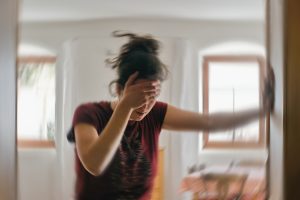
What is Vasovagal Syncope?
Vasovagal Syncope is medically described as a condition where an individual experiences a rapid drop in their heart rate and blood pressure. This sudden rapid decrease leads an individual to having feelings of lightheadedness, a rapid heartbeat, nausea, rapid changes in body temperature, loss of color in their complexion, and blurred vision. These symptoms typically result in an individual feeling faint and/or fainting. Experts have found that Vasovagal Syncope, also known as Reflex Syncope or neurocardiogenic syncope, can be brought on by the body when triggered by high feelings of emotional distress and sometimes pain.
What are the 4 Types of Vasovagal Syncope?
The four commonly described categories of Vasovagal Syncope are: reflex mediated, cardiac, orthostatic, and cerebrovascular. Reflex Mediated Syncope occurs when the brain misinterprets the information it is receiving, resulting in an inappropriate response such as fainting. Essentially, the brain is misfiring to a smoke signal that has no smoke. Cardiac Syncope can cause a loss of consciousness due to a medical condition, typically a defect in the cardiac system. This defect can either be structural or electrical. It can arise in conditions such as bradycardia, tachycardia, or various types of hypotension. Therefore, the brain cannot properly diffuse the situation because the cardiac output being generated is not substantial enough. Orthostatic Syncope is also known as Orthostatic Hypotension. This condition results in a quick drop of blood pressure when an individual experiences a quick change in position. For example, an individual rises too fast from bed in the morning and starts to feel dizzy and faint as a result. It can also be medically explained by an increased vascular resistance in the body. The last category of syncope is known as Cerebrovascular Syncope. This loss of consciousness is linked to the appearance of cerebral vasoconstriction, which is the direct effect of blood vessels constricting in the brain. This results in interrupted blood flow and oxygen delivery to the rest of the body. In turn, this can lead to fainting and/or fainting-like symptoms.
How to Test for this Condition
The most common test for this type of condition is the Head-up Tilt Test or the HUT. This test is done in a medical setting where a physician has the patient lay on a flat table-like surface and attaches monitors to track blood pressure, heart rate, and blood sugar levels. These rates are tracked while the table is titled in different angles with the patient lying supine on their back. Typically, the test is performed in different time increments at different angles. For example, a typical HUT test looks like this example provided by the Cleveland Clinic:
If an individual tests positive for symptoms of syncope, the results will show that one or multiple of these occurrences happened during testing: slowed or increased heartbeat, low blood sugar levels, decreased blood pressure, and fainting/symptoms leading to fainting. Laboratory tests can also be performed to look for underlying conditions causing an individual to suffer from syncope. These blood tests are looking for elevated levels in troponin and natriuretic peptides. Other common forms of testing are those that try to identify possible underlying heart conditions. These tests are typically a combination of echocardiography, prolonged electrocardiographic monitoring, a stress test, electrophysiological study and an implantable loop recorder.
Debunk: Vasovagal Syncope Only Happens When an Individual has a Fear of Blood
When most people think of this condition, they think, “Oh! They must be fearful of blood.” While this is a common premise, it is not the only one that is true. Vasovagal Syncope occurs when your body is exposed to triggers that greatly affect your emotional state. Any phobia an individual may have is an automatic predisposition to this condition occurring. For example, I’m sure we have all seen a video or two via social media where someone goes on a really scary roller coaster while having a fear of heights. They may pass out by the time they reach the top. It is not as abnormal as we believe it to be. It is just a more extreme response to phobias and triggering events.
Panic Attacks Can Result in Seizure-Like Fainting
The Vagus Nerve in the body has the main function of helping us exit out of fight-or-flight mode. Interesting enough, this condition is named after the functioning of this nerve…or lack thereof. This nerve relays to your brain when a triggering stimulus has exited, and fires signals to help bring your body back to a normal homeostatic state. Unfortunately, we don’t all have perfectly functioning nervous systems. This is the case with any individual experiencing syncope symptoms. The Vagus Nerve in turn misfires signals, and the body does not leave fight-or-flight mode fully. Instead, this nerve overreacts and can result in a sudden syncope response. Sometimes, I like to think it might just be the brain’s way of completely shutting the body down to avoid a triggering stimulus altogether. These fainting spells sometimes scare those around us into thinking something more serious and damaging is happening. In addition, panic attacks can result in seizure-like fainting. These episodes can sometimes closely resemble an epileptic seizure. Those suffering from syncope can have seizurelike symptoms with the most notable being the jerky body movements while unconscious. It is important to note that seizures tend to be more severe and the duration and number of jerky body movements far surpasses those of a syncope reaction. The recovery period from a seizure also tends to be longer and more extreme. This is not to say that a person experiencing syncope just bounces back after the incident. There is still a recovery period and moments of confusion immediately after. The effects are just not as long-lasting as someone experiencing a true seizure.
What does therapy entail for treating an individual with Vasovagal Syncope?
Research reports have found that Cognitive Behavioral Therapy (CBT) has been the most useful in helping treat clients who are suffering from anxiety and have a history of Vasovagal Syncope. One of the methods used to help treat patients alongside CBT has been the Applied Tension Technique. This technique involves the patient purposefully tensing their muscles to raise their blood pressure and prevent it from dropping to the point of fainting. With a technique such as this one in place, therapy can concentrate more on the cognitive construct of the issue being dealt with. CBT is helpful because it gives an individual the tools to change the way they react to outside things that may trigger their anxiety, thus preventing a fainting episode. Like any other form of treatment for an individual with intense anxiety, a therapist should be made aware of the condition. This way, when incorporating practices to help work on the triggers, a therapist can make sure the individual is placed within a safe and controlled environment. A big part of CBT is working on desensitization through Exposure and Response Prevention (ERP). Essentially, exposing the client to something triggering when they are placed in an atmosphere with some control. Whereas we usually find ourselves with little to no control when hit with something upsetting to our brains. The therapist will gradually help the patient face these unwanted fears while providing the tools needed to overcome the anxiety. They may create a hierarchy plan together and scale the triggers from level of difficulty to overcome. It is a gradual process, and one I would venture to say would take longer with such a strong risk of a physical reaction. However, like treating any other form of anxiety, the fears can be overcome if the individual is not flooded with too much at once in a therapy session and can continuously work on their own outside the clinical setting.
Tips to Help Prevent a Syncope Reaction from Occurring
There is still a lot of research to be done around this condition and its relation to anxiety. Therefore, treatment plans are very much still in the early beginnings. This doesn’t mean all hope is lost though. I have found that if you can identify anxiety provoking triggers, you are one step in the right direction. Therefore, when you are out in the real world, a surprise trigger may not have as much control over how your body reacts because you have been practicing for this exact situation. Researchers have also found that taking care of your body through exercise and eating healthy can help prevent the body from reacting so strongly to unwanted stimuli. It is recommended to drink plenty of fluids and to eat a higher salt diet to help maintain blood volume, to exercise a moderate amount “(Department of Health and Human Services recommends these exercise guidelines: Aerobic activity. Get at least 150 minutes of moderate aerobic activity a week. Or get at least 75 minutes of vigorous aerobic activity a week),” avoid high levels of caffeine intake, and avoid prolonged periods of standing. Sometimes, these incidents still happen, even when you’ve implemented every preventative measure in the book. If you feel an attack coming on, it is recommended to try and contract your muscles in your arms, hands, legs, and feet to push blood back towards the center of your body. It can also be helpful to take a seat and draw your knees into your chest while lying your head between your knees. Overall, finding a combination that works best for you is the most important! We can try so many preventative measures, and things will sometimes still happen. It is important to remember that this is just your body’s way of trying to protect itself… even if it’s doing more harm than good. As an endnote, I feel it is always most helpful in the long run to treat this condition as an anxiety condition. If all else fails, find somewhere safe and take a seat or lay down away from anything that could cause you harm if you are to fall unconscious.
• Mikayla Rodin, MA, AMFT, is a psychotherapist at the OCD Center of Los Angeles, a private, outpatient clinic specializing in Cognitive-Behavioral Therapy (CBT) for the treatment of Obsessive-Compulsive Disorder (OCD) and related anxiety based conditions. In addition to individual therapy, the center offers ten weekly therapy groups, as well as online therapy, telephone therapy, and intensive outpatient treatment. To contact the OCD Center of Los Angeles, click here.




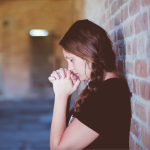








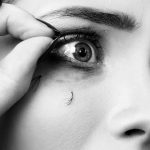



















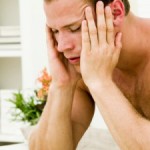
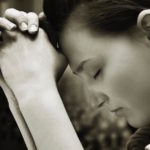



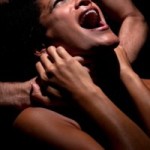












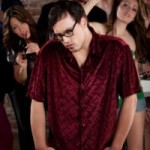








One Comment
This is difficult to read, as someone who struggles with fear of fainting while driving on the highway. I haven’t fainted during a panic attack, but this contributes to my overall fear that it is possible that this could happen while driving. I’m doing exposures currently. Is there any way of identifying if you have this condition or will have it?